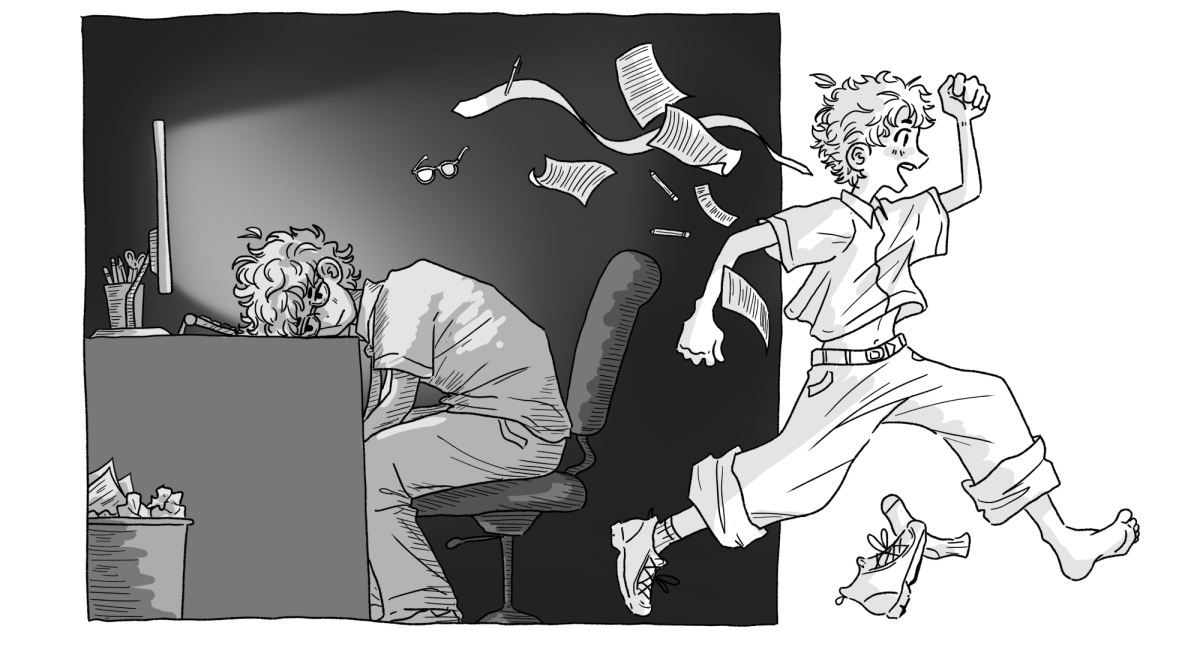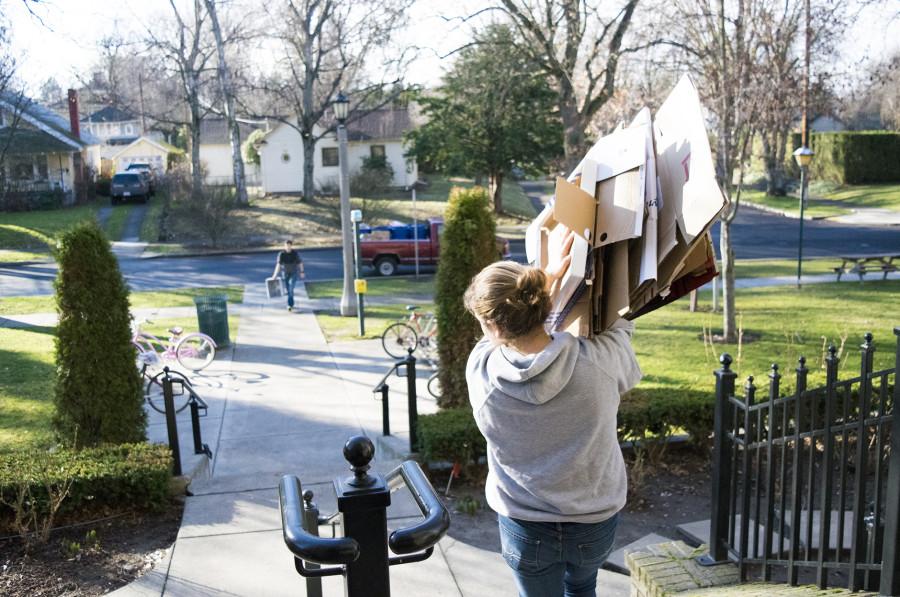
On Feb. 11, 2014, President George Bridges held a lunch to honor the heroic efforts of Physical Plant employees, specifically members of the grounds crew, during the past couple weeks of harsh winter conditions.
The event served to commemorate all of the people who maintain campus behind the scenes. These individuals work under the radar, sometimes starting their shifts as early as 3 a.m. in order to finish before students start their day. They are tasked with preserving an attractive environment without anybody noticing, regardless of what the weather throws at them.
“You see people out there plowing snow for your sidewalks in the winter, and they become noticeable, but they blend in when they are just picking up leaves and trimming the shrubs. The same people are there working hard all year long,” said Maintenance Supervisor Randy Coleman, who has held his position for the past 10 years at Whitman.
The Physical Plant itself is divided into three sections. The maintenance staff take care of all the buildings on campus, the grounds crew is in charge of the exterior campus and the academic custodians are focused on janitorial services.
Coleman, who started out as a heating, ventilation and air conditioning technician, has learned to meet the high demands of students and faculty on campus.
“One of the biggest challenges in the maintenance department is trying to respond to everybody’s needs quickly,” said Coleman.
The recent snowstorm has topped the charts for some Whitman students since they arrived in Walla Walla, but Physical Plant employees maintain that the snow this winter is nothing special.
Grounds Supervisor Bob Biles has been working at Whitman for just under 20 years.
“If you take all the people that are on my crew, we have well over 100 years of combined experience on this campus. There’s nothing that we haven’t really seen,” he said.

As temperatures start to drop, and the snow starts falling in early winter every year, the maintenance team’s biggest worry is the heating and piping throughout the buildings.
About five years ago, Coleman recalls, the sprinkler pipes froze in the attic of Lyman House. The ice expanded, splitting the pipes and flooding an entire section of all four floors of the building.
Remembering the difficulty of separating and sorting students’ damaged personal items, Coleman says that now they monitor the sprinkler system much more closely.
For Coleman’s department, the responsibilities and challenges remain fairly consistent year round, but Biles tells a different story.
Every year is a little bit different, he says, but the grounds crew always operates on a three-season cycle. Beginning with growing season in the middle of March through most of October, Biles’s team of eight full-time employees, all with over 10 years of experience, work to nurture the plants and trees concentrated on campus. The team then deals with leaves in the fall until December, when they change their mechanical equipment for snow and ice removal.
The name of the game for Biles’s team is flexibility.
“All of us are always on call,” said Biles. “The past couple of weeks we’ve often been in around 3 a.m. It’s kind of a minute-by-minute deal.”
With only eight full-time workers on his crew, Biles is often forced to make decisions about how he allocates his labor. The school’s progressive sick leave policy, where staff are allowed four weeks paid vacation and one day per month in sick leave, does not always help.
“I’m not saying it’s a problem, but the sick leave policy can create a dilemma,” said Biles. “We have just enough people. We don’t have any excess in labor. If somebody is sick or hurt or pulled away because of a family situation that puts an extra burden on us.”
The recent snowfall certainly meant longer days for grounds crew members, but it’s nothing compared to what they have seen in the past.
Challenging winter circumstances are a frequent occurrence in Walla Walla, stretching back to Biles’s first couple days on the job. Eighteen years ago, it was 10 degrees below zero, and ice began to form all across campus. After a few hours, the ice had grown 4 inches thick.
“The entire physical plant was out there with ice picks trying to chip ice off the sidewalk. That was probably the worst thing that I’ve encountered,” he said.
Now, with temperatures finally rising, Biles and his team can rest easy. For the grounds crew, the change of pace from plowing snow to mowing lawns and getting ready to start planting flowers will be nothing short of refreshing.










